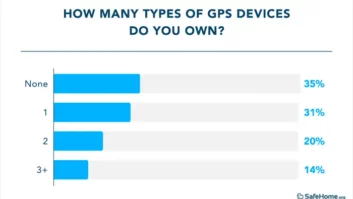As expected, the iPhone is proving a dynamic platform for navigation, and it is attracting a torrent of new GPS-related apps to Apple’s App Store.
A TWICE count showed more than 500 GPS apps were added to the store in the U.S. since June 17 — when Apple enhanced the iPhone’s GPS capability — with total navigation apps numbering more than 3,000, by iSuppli’s count.
TomTom launched a long-awaited $99 turn-by-turn navigation app on Aug. 17, which shot quickly to top slots on the App Store in navigation on the day of its release. It joins other turn-by-turn apps from companies including AT&T/TeleNav, Networks in Motion, Navigon, Sygic and NNG Global (iGo).
“The iPhone continues to beat all expectations in terms of [location-based service] LBS apps … it is nothing short of a gold rush,” said Dominique Bonte, ABI Research telematics and navigation practice director. “Just about every LBS player I have talked with recently told me they have launched or are planning to launch their app on the iPhone,” he added.
Fullpower Technolgies, which sells the popular MotionX-GPS app, said 2 million people have downloaded its app worldwide since December 2008, and more than 750,000 are paid users. About 70 percent of the downloads are from North America, said founder Philippe Kahn.
But much of the innovation in GPS is in areas other than navigation. One key segment to watch is in real-time traffic — a feature that many thought would turn personal navigation devices (PNDs) into must-have car appliances. Drivers would no longer need to wait 10 minutes for a traffic report on the radio. But, it turned out, even the “real-time” reports can be less than reliable, and they usually carry monthly fees.
A game changer may be the Inrix Traffic! app that launched on the iPhone this month. It quickly flew to one of the top slots in free navigation apps. It turns a user’s iPhone into the Internet-connected traffic device that Dash Navigation attempted to market last year, and does so for free (providing the user shells out the money for an iPhone and a data plan).
To explain, Inrix lets users opt in to a network of more than a million other vehicles that generate traffic reports as they drive because Inrix tracks their GPS/cellphone data anonymously to create “crowd-sourced” traffic reports.
Where Inrix stands apart is that it already has a million vehicles in its network as the company sells data to TomTom, MapQuest, TeleNav and others.
Inrix has deals with fleets and delivery services, whose vehicles “report” their whereabouts every one to two minutes.
It claimed its traffic reports are 85 percent to 95 percent accurate, compared with others that it characterizes as 50 percent to 85 percent accurate. So app users benefit from these reports while becoming yet another traffic “probe” in the system.
Inrix also adds a forecast feature for traffic along a user’s route. The company has studied traffic patterns for years and created predictive algorithms that take into account factors in the locale, such as weather, school schedules, sporting and other events, etc. Users can see representations of what the traffic on their route should look like in 15, 30 or 45 minutes from now or up to one hour in advance.
Other new apps whose users create traffic updates include Traffic Tweet and Aha Mobile.
Crowd sourcing, in general, could be another game-changing way the iPhone may alter the navigation landscape.
By creating an app that allows all users to contribute information, developers let users create maps or databases of where traffic cameras are located, etc. Crowd-source applications such as Waze, for maps, and Trapster, for speed cameras, are helping to make the iPhone a platform for enhanced navigation beyond turn-by-turn directions and traffic.
Bonte said of crowd sourcing, “The relevance lies in the reduction of costs [avoiding map licenses and other content costs], which allows developers to sell LBS apps at a much lower price.”
Turn-by-turn navigation apps also seem to be faring well. Even though they compete on the App Store with apps often sold below $10 or which are free, several turn-by-turn by turn apps are in the Top 10 navigation category, carrying prices of $69 or $99 or higher.
Yet another class of GPS apps are emerging that can only be called revolutionary. They use the iPhone’s video function to create photo-real, almost futuristic apps.
iSuppli predicted more than 80 million iPhones (not counting iPod Touch devices) will be in use by 2012. And it expects the number of navigation-related apps on the App Store will climb to 10,000 by that time.
PND makers pointed out that not everyone owns an iPhone or wants to own one.
But as Patrick Connolly, research director of IMS Research, told TWICE, “The GPS bases are loaded on the iPhone — it now remains to be seen if developers can knock it out of the park.”













